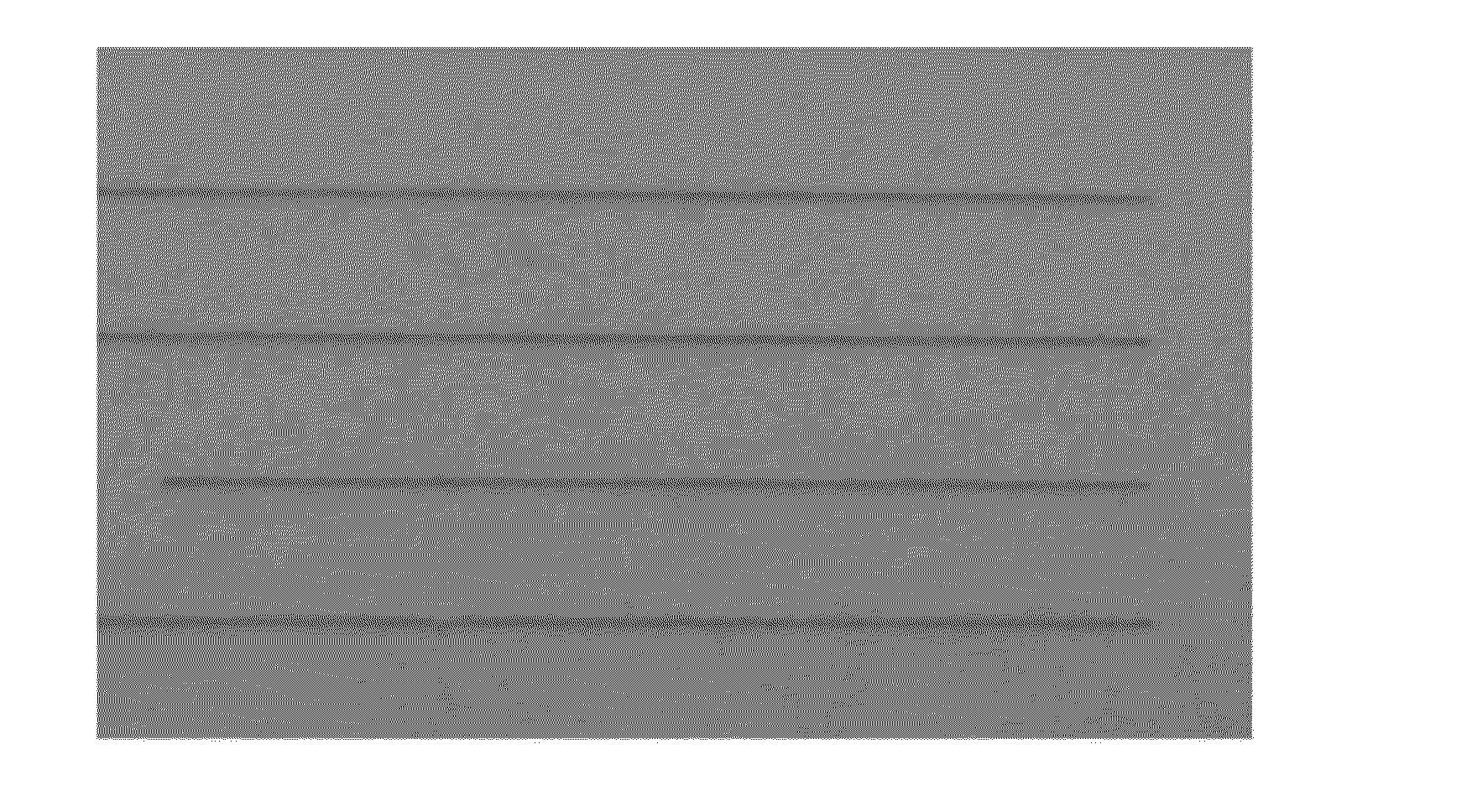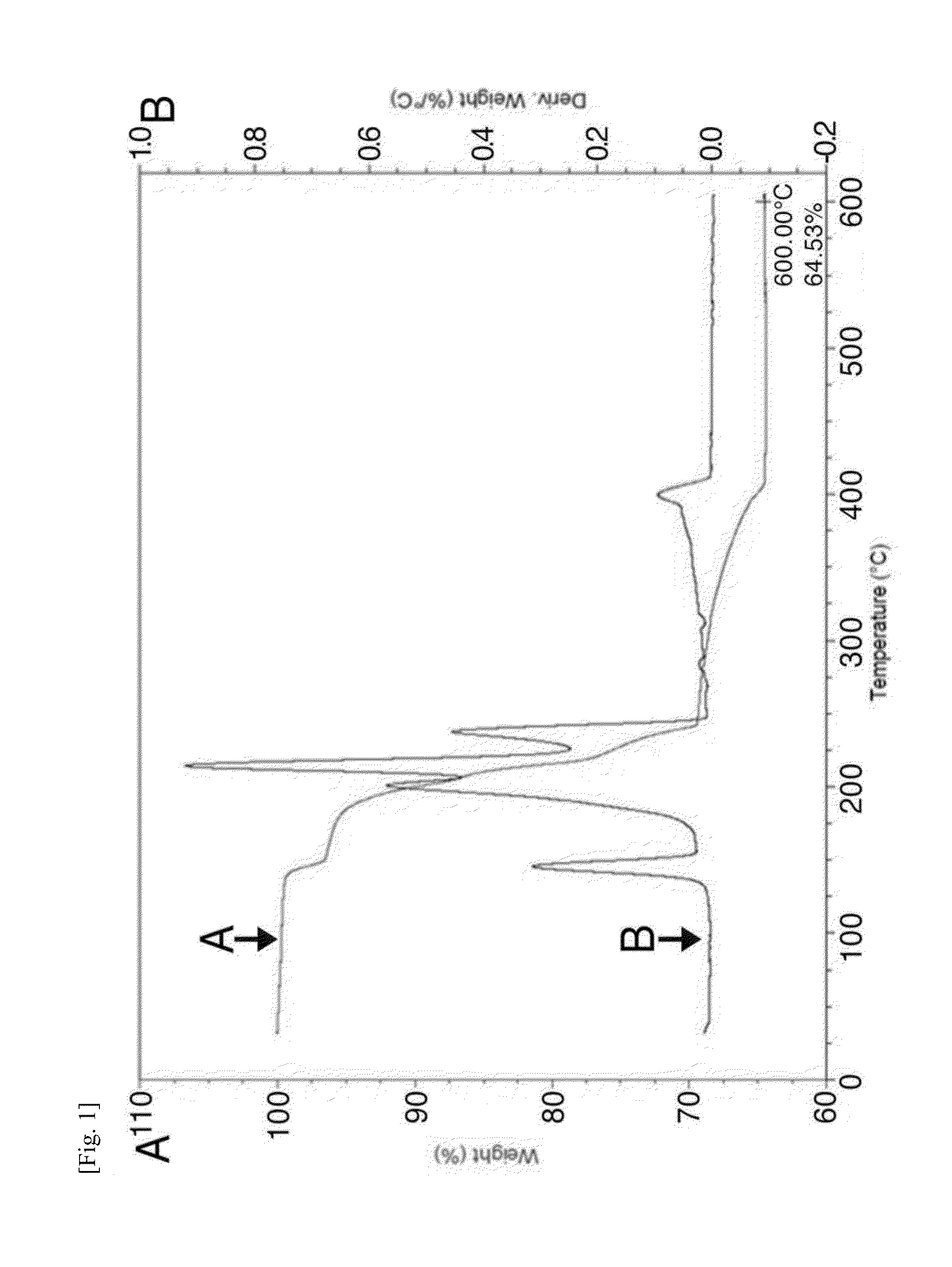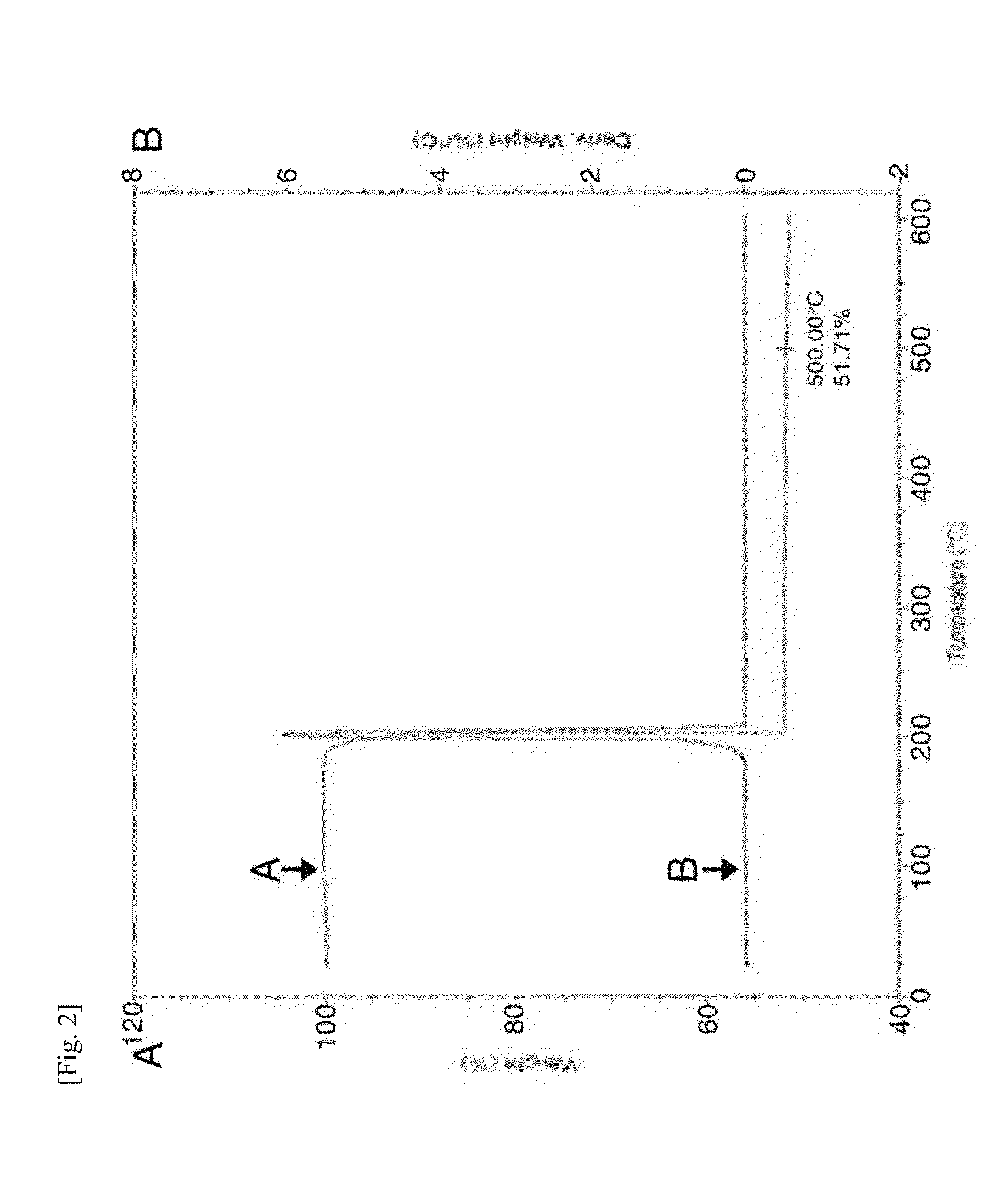Metal precursor and metal precursor ink using the same
a metal precursor and ink technology, applied in the direction of non-metal conductors, liquid/solution decomposition chemical coatings, conductors, etc., can solve the problems of increased surface tension, nozzle clogging during printing, poor long-term storage stability, etc., to induce intramolecular and/or intermolecular complexation, enhance metal content, and reduce the effect of nozzle clogging
- Summary
- Abstract
- Description
- Claims
- Application Information
AI Technical Summary
Benefits of technology
Problems solved by technology
Method used
Image
Examples
synthesis example 1
Synthesis of dimethyl 2-(hydroxyimino)malonate
[0066]A solution of 76 mL of glacial acetic acid and 10 g of sodium hydroxide in 30 mL of water was slowly added to a 500 mL three-neck flask equipped with a stirrer, and then a solution of 10 g of dimethyl malonate in 20 mL of glacial acetic acid was added thereto. The mixture was cooled in an ice bath. To the mixture was slowly added dropwise a solution of 52.2 g of sodium nitrite (NaNO2) in 76 mL of water through a dropping funnel while maintaining the temperature at 5° C. or less. After completion of the dropwise addition, the temperature was slowly raised to room temperature. The resulting mixture was allowed to react for 24 h with stirring. After the reaction was finished, the reaction mixture was diluted with 500 mL of water and extracted thrice with 500 mL of ethyl acetate. The organic layer was carefully washed with an aqueous solution of sodium bicarbonate (NaHCO3) until the water layer became alkaline. The resulting organic la...
synthesis example 2
Synthesis of dimethyl 2-(methoxyimino)malonate
[0067]16.1 g (0.1 mol) of dimethyl 2-(hydroxyimino)malonate and 85.1 g (0.6 mol) of methyl iodide were placed in a 250 mL three-neck flask equipped with a stirrer, and 27.8 g (0.12 mol) of silver oxide (Ag2O) was slowly added portionwise thereto. After stirring at room temperature for 30 min, the reaction temperature was slowly raised to 50° C. The mixture was continued for additional 12 h. After completion of the reaction, the reaction mixture was added with 150 mL of ethyl ether, filtered, and evaporated to remove the solvent, affording 16.8 g (yield 96%) of the title product as a colorless, transparent liquid. 1H NMR (CDCl3); d 3.850 (s, 3H, —CH3), 3.854 (s, 3H, —CH3), 4.073 (s, 3H, —OCH3)
synthesis example 3
Synthesis of dimethyl 2-(allyloxyimino)malonate
[0068]16.1 g (0.1 mol) of dimethyl 2-(hydroxyimino)malonate and 13.3 g (0.11 mol) of allyl bromide were placed in a 250 mL flask equipped with a stirrer, and 15.2 g (0.11 mol) of potassium carbonate and 150 mL of acetone as a solvent were added thereto. The mixture was allowed to react at 90° C. for 24 h. After completion of the reaction, the solvent was vaporized in vacuo. The remaining reaction mixture was added to 250 mL of water and extracted with ethyl acetate. The organic layer was dried over anhydrous sodium sulfate, filtered, and evaporated to remove the solvent. The residual red liquid was purified by column chromatography (hexane:ethyl acetate=7:3), affording 14.8 g (yield 73.6%) of the title product as a pale yellow liquid. 1H NMR (CDCl3); d 3.891 (s, 3H, —CH3), 3.903 (s, 3H, —CH3), 4.800-4.821 (m, 2H, —CH2), 5.266-5.365 (m, 2H, ═CH2), 5.920-6.018 (m, 1H, —CH)
PUM
| Property | Measurement | Unit |
|---|---|---|
| Temperature | aaaaa | aaaaa |
| Percent by mass | aaaaa | aaaaa |
| Temperature | aaaaa | aaaaa |
Abstract
Description
Claims
Application Information
 Login to View More
Login to View More - R&D
- Intellectual Property
- Life Sciences
- Materials
- Tech Scout
- Unparalleled Data Quality
- Higher Quality Content
- 60% Fewer Hallucinations
Browse by: Latest US Patents, China's latest patents, Technical Efficacy Thesaurus, Application Domain, Technology Topic, Popular Technical Reports.
© 2025 PatSnap. All rights reserved.Legal|Privacy policy|Modern Slavery Act Transparency Statement|Sitemap|About US| Contact US: help@patsnap.com



